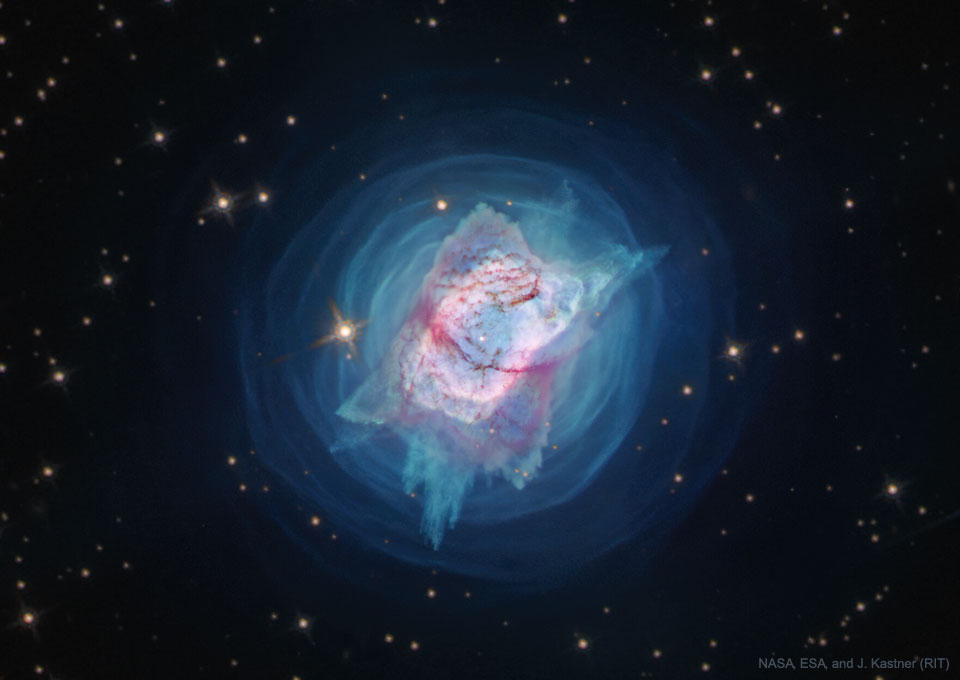2020 June 30
Bright Planetary Nebula NGC 7027 from Hubble
Image Credit: NASA, ESA, Joel Kastner (RIT) et al.; Processing: Alyssa Pagan (STScI)
Explanation: What created this unusual planetary nebula? NGC 7027 is one of the smallest, brightest, and most unusually shaped planetary nebulas known. Given its expansion rate, NGC 7027 first started expanding, as visible from Earth, about 600 years ago. For much of its history, the planetary nebula has been expelling shells, as seen in blue in the featured image. In modern times, though, for reasons unknown, it began ejecting gas and dust (seen in red) in specific directions that created a new pattern that seems to have four corners. These shells and patterns have been mapped in impressive detail by recent images from the Wide Field Camera 3 onboard the Hubble Space Telescope. What lies at the nebula’s center is unknown, with one hypothesis holding it to be a close binary star system where one star sheds gas onto an erratic disk orbiting the other star. NGC 7027, about 3,000 light years away, was first discovered in 1878 and can be seen with a standard backyard telescope toward the constellation of the Swan (Cygnus).
Tomorrow’s picture: inverted Earth
明亮行星状星云NGC 7027的哈勃影像
影像提供:NASA, ESA, Joel Kastner (RIT) et al.;图像处理:Alyssa Pagan (STScI)
说明:这个奇特的行星状是怎么产生的?NGC 7027是地球天空中最小、最明亮和形状最特殊的行星状星云之一。从地球看出去,以它现行的扩张速率来估算,NGC 7027大约在6百年前开始扩张。在它存在的大部分历史中,如这幅泛蓝的主题影像所示,这个行星状星云不停的产生壳层结构。而在近代因未知原因,它开始朝特定的方向抛出渲染成红色的气体和尘埃,形成影像中这个看似有4个尖角的新结构。最近哈勃太空望远镜的第3代广视野相机,为这些气壳和图案拍下无比清晰的新图像。目前并不清楚这个星云的中心有什么,不过假说之一宣称:它可能是个密近双星系统,其中一颗恒星抛出物质,成为另一颗行星周围不稳定会发生爆发的吸积盘。大约3,000光年远、首先发现于1878年的NGC 7027,用一般的后院的中小型望远镜,就能在天鹅座方向看到它。
明日的图片:inverted Earth







